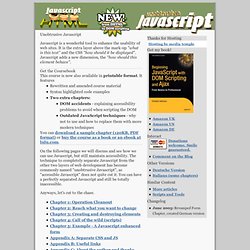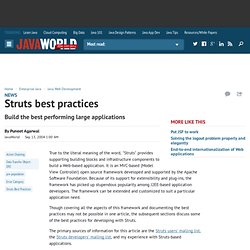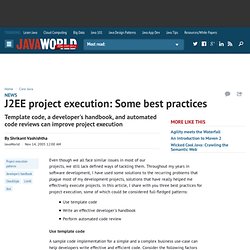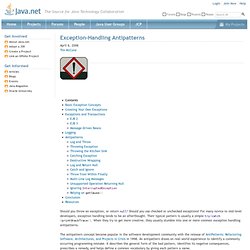

10 best practices with Exceptions - WikiJava, exception, error, handling, throw, throwable. HTML5 Boilerplate - A rock-solid default for HTML5 awesome. Opquast - Bonnes pratiques qualité pour les services en ligne. Unobtrusive Javascript. Unobtrusive Javascript Javascript is a wonderful tool to enhance the usability of web sites.

It is the extra layer above the mark-up "what is this text" and the CSS "how should it be displayed". Javascript adds a new dimension, the "how should this element behave". Get the Coursebook This course is now also available in printable format. Rewritten and amended course material Syntax highlighted code examples Two extra chapters: DOM accidents - explaining accessibility problems to avoid when scripting the DOM Outdated JavaScript techniques - why not to use and how to replace them with more modern techniques You can download a sample chapter (120KB, PDF format) or buy the course as a book or an ebook at lulu.com. On the following pages we will discuss and see how we can use Javascript, but still maintain accessibility. Anyways, let's cut to the chase. Thanks for Hosting Hosting by media temple Get my book!
Interact Donations welcome. Comment on the Blog Other Versions Similar Content Changelog. Struts best practices. True to the literal meaning of the word, "Struts" provides supporting building blocks and infrastructure components to build a Web-based application.

It is an MVC-based (Model View Controller) open source framework developed and supported by the Apache Software Foundation. Because of its support for extensibility and plug-ins, the framework has picked up stupendous popularity among J2EE-based application developers. The framework can be extended and customized to suit a particular application need. Though covering all the aspects of this framework and documenting the best practices may not be possible in one article, the subsequent sections discuss some of the best practices for developing with Struts. The primary sources of information for this article are the Struts users' mailing list, the Struts developers' mailing list, and my experience with Struts-based applications.
The article discusses the following main points: Screens with dynamic fields Problem Struts best practice Or use: J2EE project execution: Some best practices. Even though we all face similar issues in most of our projects, we still lack defined ways of tackling them.

Throughout my years in software development, I have used some solutions to the recurring problems that plague most of my development projects, solutions that have really helped me effectively execute projects. In this article, I share with you three best practices for project execution, some of which could be considered full-fledged patterns: Use template codeWrite an effective developer's handbookPerform automated code review Use template code A sample code implementation for a simple and a complex business use-case can help developers write effective and efficient code.
Technologies change, and finding competent technical people with experience in new technologies can prove difficult. Implementation To write your template code, gather a team of experts (both technical and functional) to identify a simple and a complex case from a problem area of the application to be developed. SitePoint : New Articles, Fresh Thinking for Web Developers and Designers. Exception-Handling Antipatterns. Should you throw an exception, or return null?

Should you use checked or unchecked exceptions? For many novice to mid-level developers, exception handling tends to be an afterthought. Their typical pattern is usually a simple try/catch/printStackTrace(). When they try to get more creative, they usually stumble into one or more common exception handling antipatterns. The antipattern concept became popular in the software development community with the release of AntiPatterns: Refactoring Software, Architectures, and Projects in Crisis in 1998. In this article, we'll discuss some fundamental concepts about the different types of Java exceptions and their intended uses.
Basic Exception Concepts One of the most important concepts about exception handling to understand is that there are three general types of throwable classes in Java: checked exceptions, unchecked exceptions, and errors. Checked exceptions are exceptions that must be declared in the throws clause of a method. Logging Example: